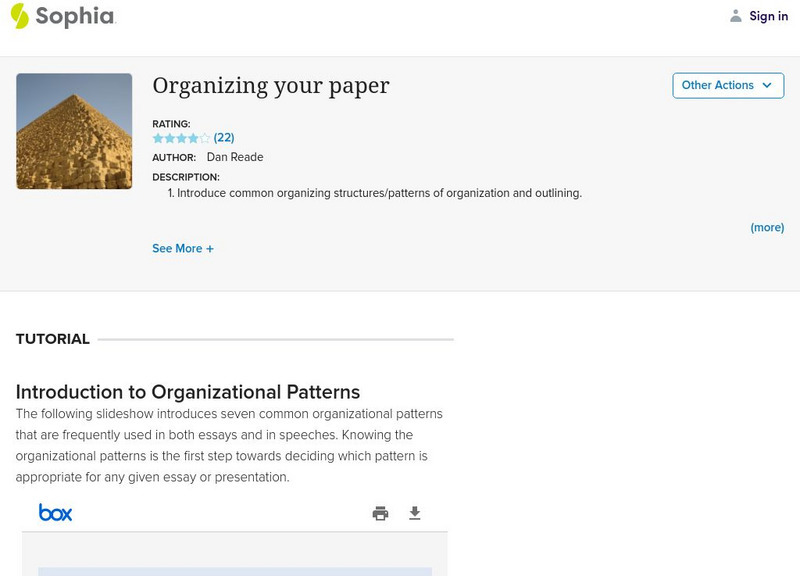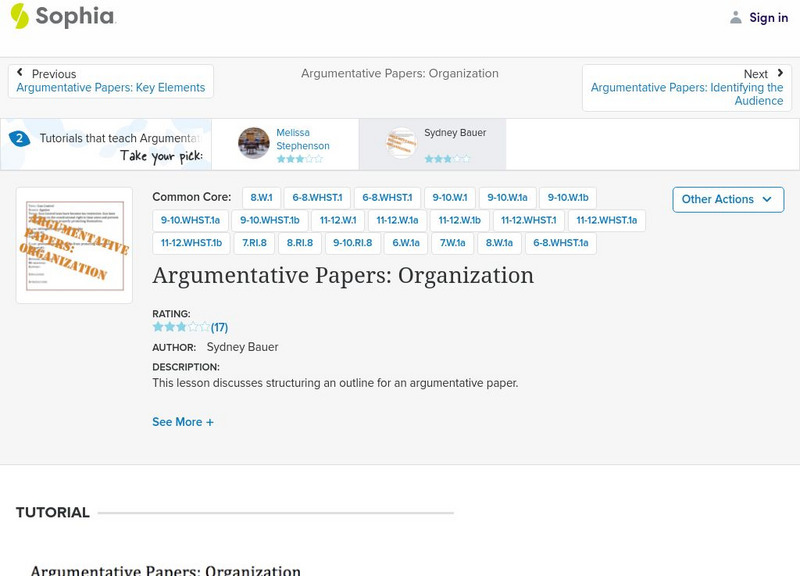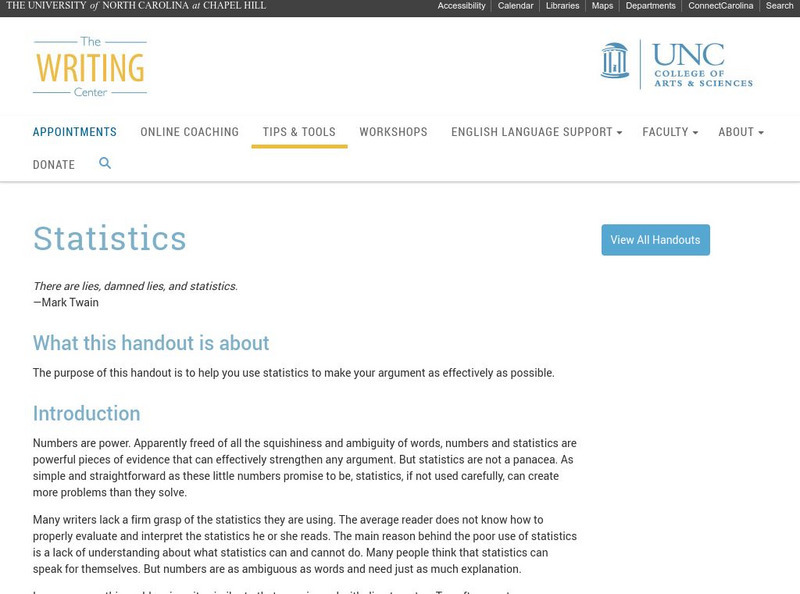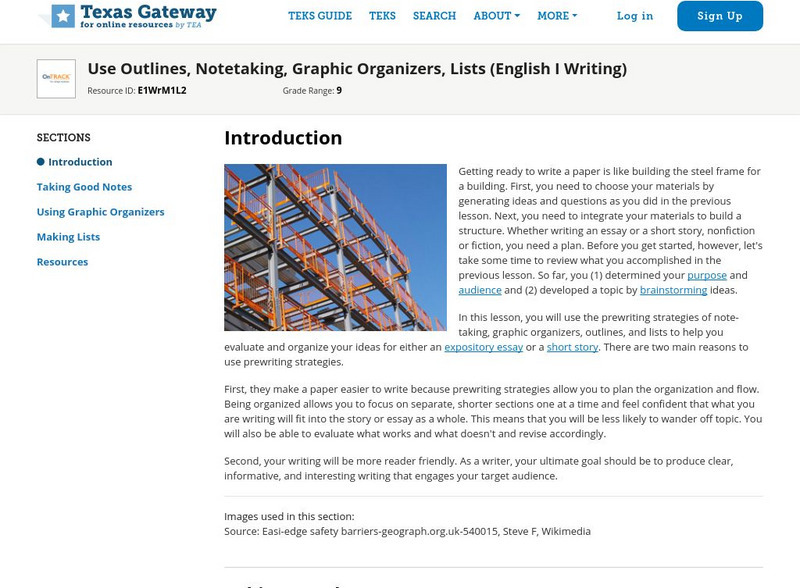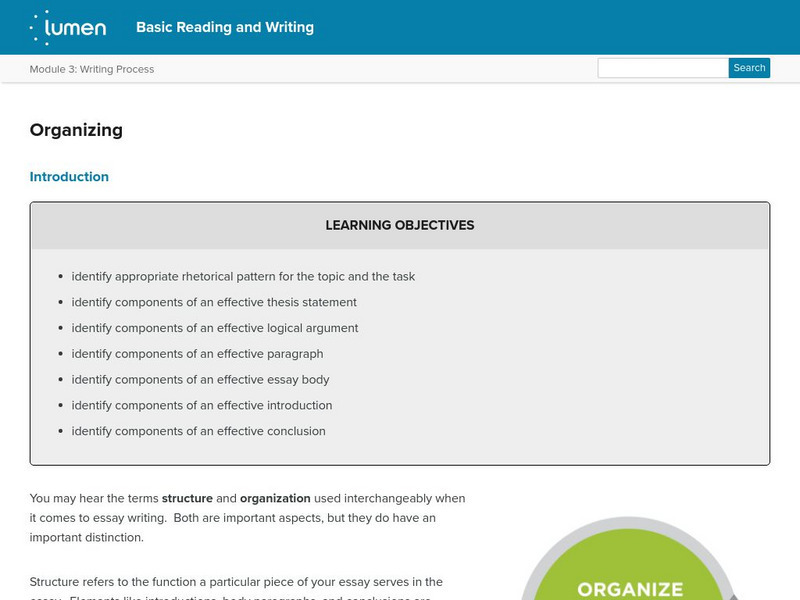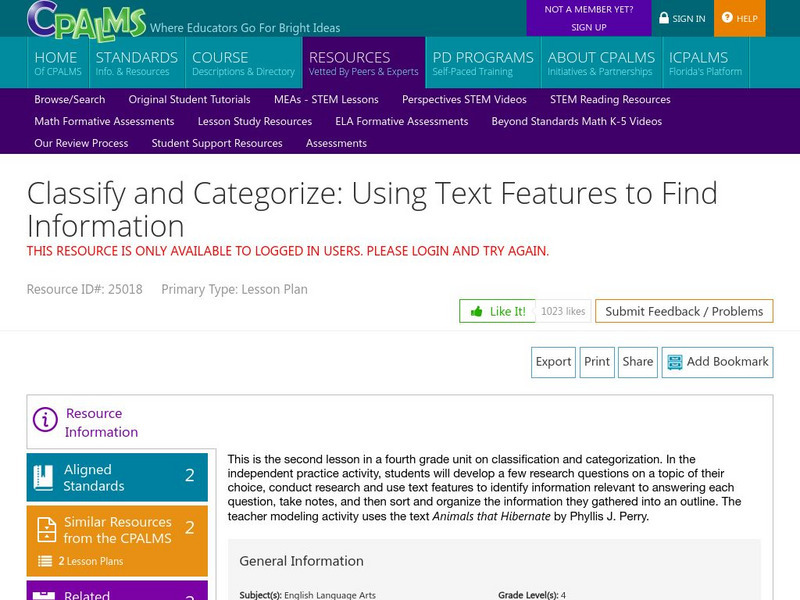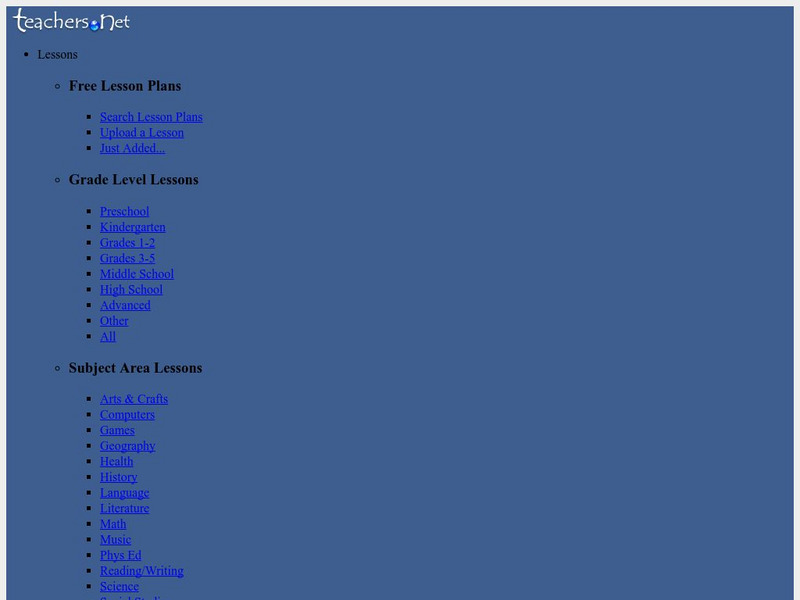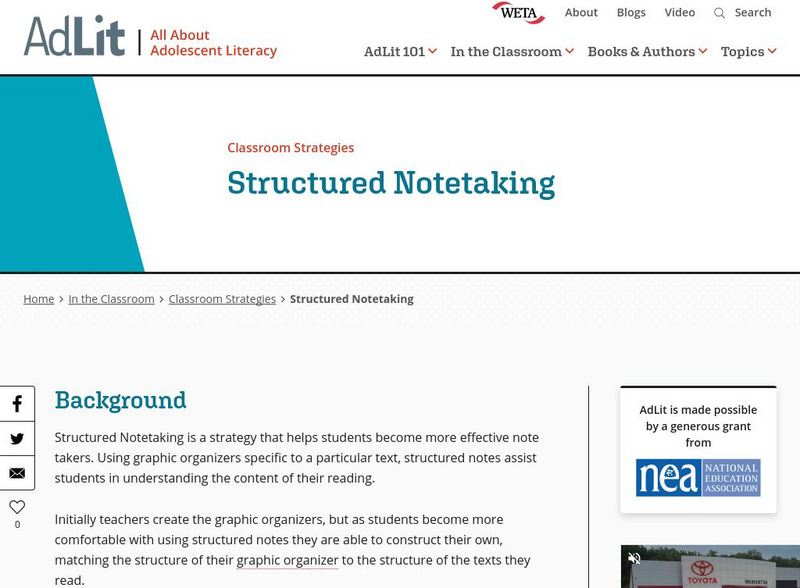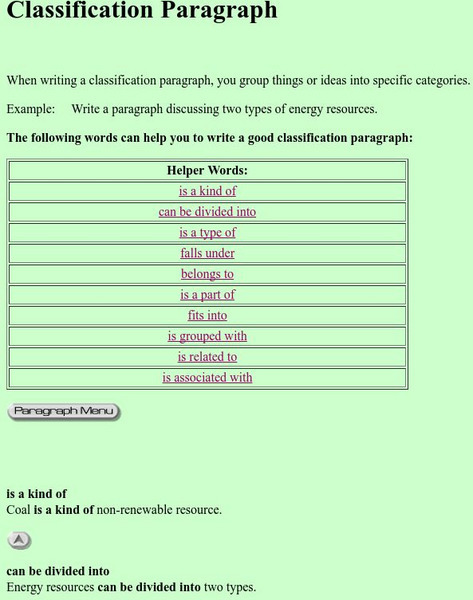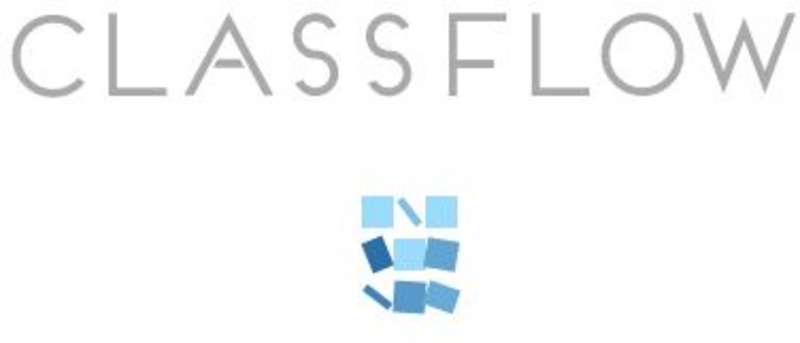Hi, what do you want to do?
Sophia Learning
Sophia: Organizing Your Paper
Two slideshows and a screencast on organizational patterns used when writing essays and speeches. The first is a 20-slide presentation explaining the seven most common organizational patterns used in writing: time sequence, spatial,...
Sophia Learning
Sophia: Paper Writing: Outlines
Show students how essential an outline is to writing a paper. This source provides explanations for writing an outline and information about how to create both formal and informal outlines.
Sophia Learning
Sophia: Argumentative Papers: Organization
This lesson focuses on the organization of argumentative papers and developing an outline for them. It begins with topic, stance, and thesis statement; next one lists each claim in order of appearance in a paper and two different...
Capital Community College Foundation
Guide to Grammar and Writing: Principles of Organization
In writing and reading organization is the key to a reader's understanding. A great site for those of you who are looking for some further explanation of organization in writing. There is instruction, an example text, and specific...
E Reading Worksheets
E Reading Worksheets: Text Structure Worksheets
This site provides several assignments and graphic organizers related to identifying text structures. Analyzing the following types of text structures are provided: main idea and supporting details; cause and effect; chronological order;...
University of North Carolina
University of North Carolina Writing Center Handouts: Statistics
When presenting an argument, the use of statistics to support a point can be very effective. This handout offers advice on both how to read statistics so that you understand exactly what they mean, and how to use them in your argument so...
Grammarly
Grammarly Handbook: Main Ideas and Supporting Ideas
An explanation and examples of main ideas and supporting details.
Texas Education Agency
Texas Gateway: Use Outlines, Notetaking, Graphic Organizers, Lists
Learn how to use outlines, notes, graphic organizers, and lists to help you evaluate and organize your ideas.
Lumen Learning
Lumen: Boundless Communications: Principles of Organization
This lesson focuses on the importance of organizing your speech including critically thinking about the contents of the speech, the components of the speech, the patterns of organization to fit the different types of speeches, and...
Lumen Learning
Lumen: Writing Process: Organizing
This lesson focuses on the organization of your paper including how to write a thesis statement, the elements of an effective paragraph, patterns of organization, transitions, and conclusions. It also provides a video of the Toulmin...
E Reading Worksheets
E Reading Worksheets: Main Idea Worksheets
In this learning module, students will learn how to identify the main ideas in individual pararaphs. Worksheets, PowerPoint lessons, and activities are provided to reinforce the concept of main idea. This module is designed to support...
Wisconsin Response to Intervention Center
Wisconsin Rt I Center: Semantic Maps for Word Learning [Pdf]
Classroom teachers will learn about semantic maps, an engaging instructional strategy tool. Teachers will learn how to implement semantic maps, understand how to measure progress with semantic maps, find research that supports semantic...
CPALMS
Cpalms: Classify and Categorize: Using Text Features to Find Information
[Free Registration/Login Required] Students will develop research questions, classify information into an outline form, and use the features of nonfiction writing to identify information relevant to a research question.
Texas Education Agency
Texas Gateway: Make Inferences in Informational/expository Text
[Accessible by TX Educators. Free Registration/Login Required] In this lesson, you will be taking a look at how authors of informational texts, such as expository texts, organize their writing and the effects that organization can have...
Teachers.net
Teachers.net: Flip Books and Story Boards
While this lesson is designed to aid in communications technology, the concept and procedure of the lesson can be readily used in any class. The main concept taught is organization and developing chronological order.
Other
Tidewater Community College: Writing Center: Organizing Paragraphs and Essays
This page gives a quick, but thorough look at a few good ways to organize a piece of writing.
AdLit
Ad lit.org: Classroom Strategies: Structured Notetaking
Structured Notetaking is a strategy that helps students become more effective note takers. Using graphic organizers specific to a particular text, structured notes assist students in understanding the content of their reading.
ACT360 Media
Writing Den: Classification Paragraphs
These tips and phrases can help you create a classification paragraph.
Sophia Learning
Sophia: Classification and Division Papers: Organization
This lesson discusses structuring an outline for a classification paper.
Mind Tools
Mind Tools: Problem Solving Article: Flowcharts
Information and a video [3:31] on the purposes of the different shapes in a flow chart, and tips on how to use a flow chart.
ClassFlow
Class Flow: Topic & Main Idea
[Free Registration/Login Required] Recognizing the main idea is the key to good comprehension. The main idea is a general idea under which fits all the supporting material of the passage or paragraph. Learn and use three strategies that...
Tom Richey
Slide Share: Distinguishing Main Ideas and Supporting Details
This downloadable slideshow focuses on main ideas and supporting details including definitions, identification, and practicing with paragraphs. RI.9-10.2 central idea/summary
ClassFlow
Class Flow: Graphic Organizer Compare Contrast
[Free Registration/Login Required] This graphic organizer flipchart creates a template to help students compare and contrast ideas and objects. It can be used in many different subject areas.
ClassFlow
Class Flow: Graphic Organizer Compare Matrix
[Free Registration/Login Required] This graphic organizer uses a matrix to help students compare items or events. It is useful for helping students understand and analyze reading passages, historical events, and scientific experiments.





